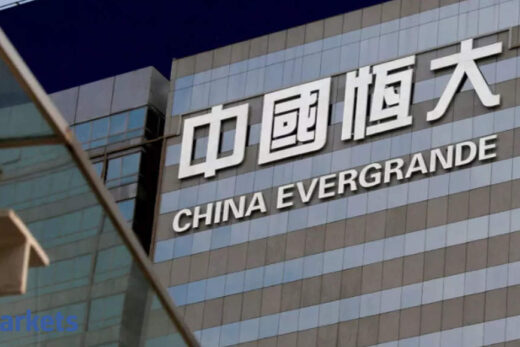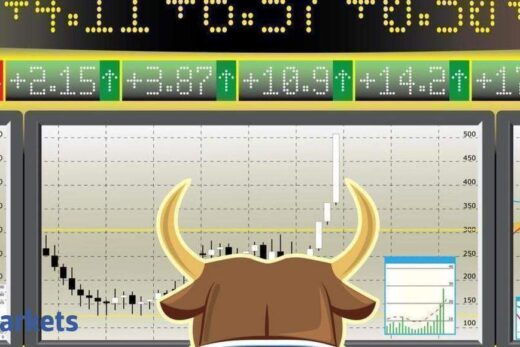In line with the above quote of Sir John Templeton, the current bull market was also born in the midst of stark pessimism owing to the Covid crisis some 18 months back. Since then, global financial markets appear to have embarked on a one-way journey in which there has been no looking back.
But while this excess liquidity-fuelled bull market is on, cracks seem to be developing both on Wall Street as well as in real economies.
Excesses & Incidents
Excesses have always invited pain in the stock market. In March-April 2021, one of Wall Street’s biggest hedge fund managers, Bill Hwang, went bust after his fund Archegos Capital lost $20 billion in just two days. That had to do with excessive borrowing. That incident substantially bruised and battered the wealth management division of Credit Suisse.
In Beijing, real estate giant Evergrande is navigating a similar problem of excesses. The firm, which had a humble beginning in the mid-1990s, emerged the largest property developer in China by selling apartments to upper and middle income groups, perhaps on the back of easy money that fuelled its growth. By 2018, it was regarded as the most valued property developer in the world and ranked 122th in the Fortune 500 list of companies.
But as China started a crackdown on shadow lenders and made attempts to cool off the rapid rise in property prices, Evergrande found itself on the brink of collapse and that triggered panic in the financial markets globally. Its deadline of September 24 for coupon payment of $80 million passed off quietly without any update from the company as markets globally braced for a hard landing.
So, can Evergrande prove to be the proverbial canary in the coal mine for the ongoing bull run? Archegos Capital’s default was substantial, with a message for the financial markets that it can be considered a case of a rogue speculator and written off as one-off event. But Evergrande’s can’t be taken that way. This developer has huge debt of $300 billion and its investments in the real estate sector are estimated to be around 2% of total investments in China.
The contribution of the real estate sector to China’s economy is 29%. Over the past few years, Chinese households were encouraged to save more wealth in the real estate sector, which now holds 75% of the total household savings.
A recent research paper published by Kenneth Rogoff, Professor at Harvard University, and co-authored by Yuancheng Yang, observes that as the Chinese real estate sector is huge, a significant slowdown in home prices can substantially impact China’s overall growth even in the absence of financial crisis.
Interestingly, the same research paper points out that the home price ratio to income is far higher in the Chinese cities compared with global hot spots like New York, London, Tokyo.
Considering that Evergrande has outstanding under-construction properties worth around $1 trillion, the housing market in China may be staring at a bigger crisis, which may eventually degenerate into a systemic chaos unless the Chinese government steps in to bail out the developer.
Pitfalls of Excessive Optimism
History of financial markets shows excessive optimism at the mature stages of bull markets has often led to major financial accidents.
In the bull market of 1998, the celebrated hedge fund of John Meriwether suddenly collapsed as Russia defaulted on its sovereign debt. At the time of its default, the fund called LTCM was exorbitantly leveraged and the value of its positions around the world was estimated at $1 trillion. To prevent a catastrophe for global financial markets and avert a systemic risk, the US Federal Reserve stepped in and brokered a deal to unravel the financial bets in an orderly manner. That caused Dow Jones to correct 20% from the 1998 high of 9,367 to a low of 7,400.
Similarly in the roaring bull market of 2003-2007, Lehman Brothers became a notorious child and symbol of excesses because of its mortgaged-backed securities division. The collapse of the housing market in the US led to the end of the 160-year-old glorious chapter of the fourth largest investment banker, as it filed for bankruptcy of $619 billion.
Way back in 1992, though there was no excess liquidity in the system as we see today, corrupt banking practices in collaboration with greedy individuals like Harshad Mehta triggered what became infamous as the Securities Scam, or the Harshad Mehta scam that led to the collapse of the Indian stock market. Huge liquidity support from banks had played a key role in that market rally as Mehta exploited the loopholes in the system in collaboration with bankers to make use of the 14-day settlement cycle then existed.
Bull Markets & Liquidity
The current leg of bull market is 18-month old without any major correction and the liquidity pumped in by the global central banks has acted as a key fuel of this rally, which has more than doubled the benchmark equity indices since the lows of March 2020.
Way back in 2013-2015, we had a similar rally that topped out after 18 months and it was attributed to the liquidity measures taken by the European Central Bank in line with its Chairman Mario Draghi’s ‘whatever it may take’ stance to stabilise the European Union debt crisis.
Go a little further back to 2009-2010, Nifty had rallied for eight quarters without any negative candle on the quarterly charts, which resulted in an 180% appreciation from the bottom. That rally began after the US Congress approved the Troubled Asset Relief Program (TARP) in 2009 to address the subprime mortgage crisis.
After this kind of rallies, Nifty has usually undergone a multi-quarter correction with a minimum of 25% cut from the top.
The 2003-07 Rally
The current market rally is often being compared with the one we had seen during 2003-07, but main difference between the current rally and the bull market of 2003-07 is that in the latter, we had healthy corrections at regular intervals, even to the magnitude of 30%, all through the bull run.
As ample liquidity was present in the system around that time as the Fed was fighting the consequences of the failure of hedge fund LTCM and the Y2K problem of 2000, the bull market had followed a massive bear market between 1999 and 2000. Therefore, the current market rally is not comparable with the bull market of 2003-2007.
So, does it mean we are in for trouble or do we actually have an opportunity at hand? Let me answer that question with a line of Paulo Coelho’s saintly character in The Alchemist, who often says omens are there written all around us and the only thing is we need to correctly read into them.
( Mazhar Mohammad is Founder & Chief Market Strategist at Chartviewindia.in. Views are his own)



